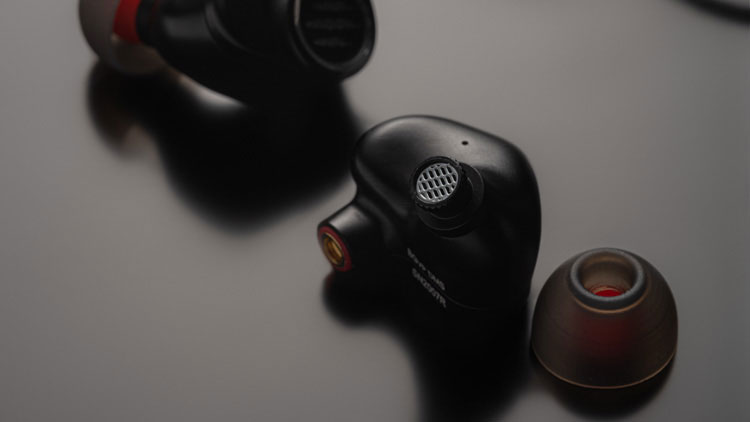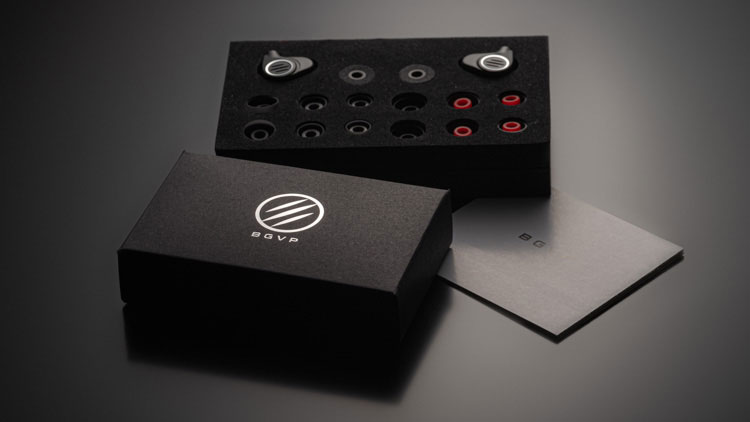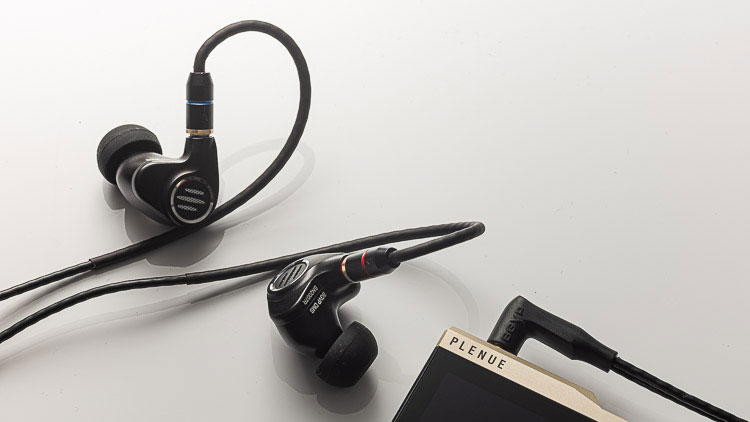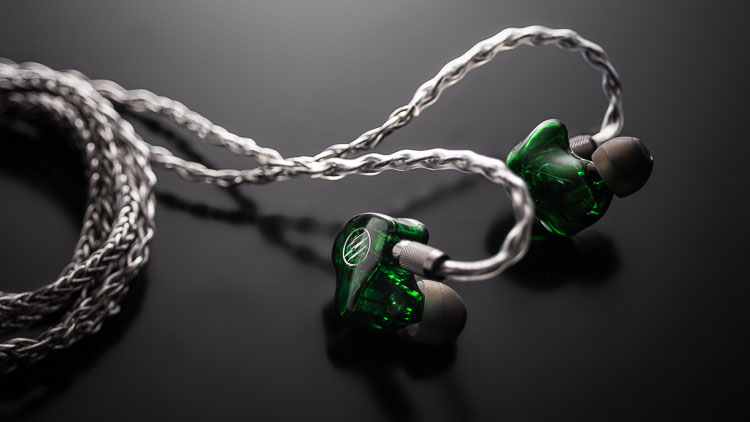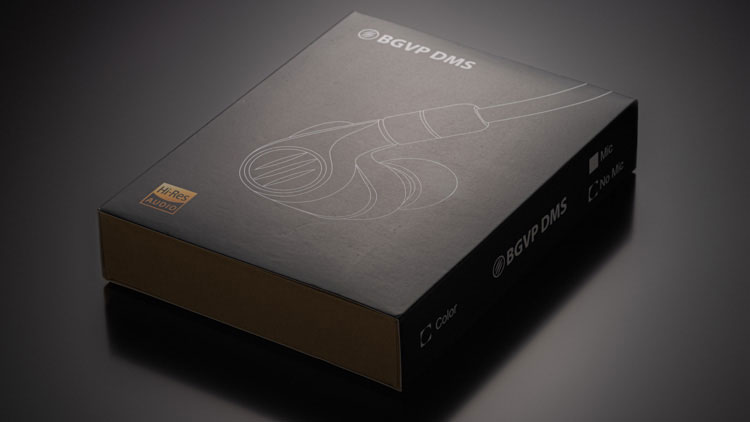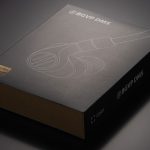The BGVP DMS is a jam-packed universal monitor consisting of 1 dynamic driver and 6 balanced armature drivers for the price of just $159.
Disclaimer: The BGVP DMS sent to us is a sample in exchange for our honest opinion. We thank the team at BGVP, and Linsoul for giving us this opportunity.
You can read up on our previous BGVP reviews on Headfonics here.
Note, this review follows our new scoring guidelines for 2020 which you can read up on here.
I began reviewing BGVP stuff with the DM6 and continued with the DM7. Generally, I dislike custom-cum-universal (CuC) designs, finding them a cheap way for mass-market companies to produce without having to design anything.
And just like that, the half-CCU, half-discrete DMS, called. Like the DMG before it, the DM2 shows nice breaks from the generic-looking DM6 and DM7. Okay, so those breaks aren’t full departures from true CCU facsimiles, but in departure, they’re as good as.
Face-on, the DMS looks damn fine. A branded grill smiles out the front, and hard flanges at the sound tube, and hard lines, firm things up from there. The nice bits hide the generic CCU backside
The DMS packs in a dizzying number of drivers. Seven per side. Fujifilm just released a 102-megapixel FF+ digital camera. The GFX-100 is a tour de force, which in the right hands provides value to studios. The DMS looks hot on paper, but wrangling all of that into a perfect package that also sounds competent, won’t be easy.
Tech Inside
Six of DMS’s drivers come in BA form, in 60318 and 31736 bundles. The last one is a 10mm DD dynamic. I’m a great lover of single or dual diaphragm dynamics and simple hybrids.
When too many drivers are packed in, things can get confusing. Sure, bundled balanced armatures cut down on the headroom and some distortion, but they often require insane amounts of current to sustain stable output signals.
Implementation rather than a number of sound-producing units should be the prime objective. Part of that is proper implementation of the 4-way crossover tying all of that together within the earphone. The DMS’s shell is aluminum. Where it meets the ear, it looks and feels like a custom earphone in miniature.
Build Quality
Because the DMS is all metal rather than plastic, it should withstand significant drops. Of course, scratches will also show more. Its seems are tight, and in general, its machining is good to great. Against the entire market and at any price within it, the DMS looks great. I see no blemishes that wouldn’t also show up in a 3000$ Ultrasone.
Averaging against volume, the DMS’s metal body is heavier, and a sturdier feeling than both the DM6 and DM7. Its slimmer cable is also easier to reign in.
What’s really nice about the DMS is the new sound tube, whose patterned grill glints in directional light. On the opposite side, another, finely perforated grill sits under a cutaway BGVP logo. The juxtaposition is pretty. As are the DMS’s clean, industrial lines and aggressive, canted MMXC port.
Alas, the angular, industrial design is only skin (or cap deep); against the ear, the DMS is contoured exactly like someone else’s ear impressions. Personally, I find the DM7 and DM6 fit better and more securely in the ear.
Cables and Connectors
In a welcome break from the DM6/7, the DMS’s slimline cable comes coated in thin and supple heat shrink. It is resistant to both body oils and sweat. There’s an extra layer of semi-porous heat shrink running from the MMCX plugs. It has a skinny neck cinch that works okay, and a matching y-split. The plug is contoured exactly like Yinyoo’s D2B4 but with BGVP branding on either side.
The cable makes more noise than either the DM6’s or 7’s. Because it is so slim, it is easier to pack in a pair of trousers, or earphone carrying case.
Comfort and Fit
The DMS is comfortable. But whether it is it’s strange, made-for-someone-else’s-ears sit angle or its high MMCX arm, I find that the DMS is not stable in my ear. I can push inward below the branded grill and the earphone nearly pops out of my ears. I can push inward at its lowest edge and it moves. Because of this, I pull the neck cinch up tight and try try try not to touch. Your mileage will vary.
Like the DM7, the DMS comes with a set of nice soft grey silicon earpieces in small, medium, and large. They are great in the ear but isolate a bit less well than the other tips.
The DMS is semi-open and isolates about as well as an earbud wearing a silicon isolator ear tip. When the DMS is in my ears, I can hear my fan on a low setting in the other room without music playing. With music going, I can barely hear my air condition unit on medium blast. Naturally, if you’re on the train and listening at ear-safe volume levels, most of the noise from outside will get in.
Accessories and Packaging
The DMS‘s slim box is a lot like the DM7 box. Its accessories and general layout follow sit. BGVP really have grown up. Like the DM7, the foam insert is a bit cheaply finished. But getting into the accessory box is easy. The box is nice and sturdy and the branding improvements that came with the DM7 made it to the DMS. Simple is best.
In total, there are nine earpiece sets, one in foam, three in soft grey silicone, three in hard grey silicon, and two in black. It is a well-rounded set. There is also a small sliding shirt clip in there. For the price, it is a well-rounded package.
Sound Impressions
Tonality and Presentation
The DMS’s sub-bass response is great: flat out to the 70Hz, and it never really rises or drops after or before that until you hit the lower mids. It is ample to give definition, weight, and feel to the yawning opening seconds to Marcus Schulz’s Mainstage. In fact, it feels weightier than the DM7.
Overall, it is closer to the DM6, but with even softer edged highs. This has the effect of removing some trance-like feel from trance music. Instead, it mates really well with laid back pop music, and basically anything with rich and high-pitched female vocals.
Instead of warm, deep, textured bass, the DMS has for speedy-reacting lows with very fast recovery. This puts it squarely between worlds. It’s not the warm, mellow, and rich, Hidiz MS4-like companion for organic, vocal, and similar music, and it’s not the speedy, v-shaped bugger the Yinyoo D2B4 is.
I’m confident in calling it a cautious everything-to-everyone earphone. As such, both it and its user will forever be in search of the perfect-fit genre for it.
Staging
What the DMS does really well is in delivering a wide, coherent sound stage. It’s wider than it is tall and taller than it is forward. Stereo details push well to the sides of the head, stretching to the shoulder and back, with bass anchors beside each jaw. The stage pushes forward along the Z-axis about half a skull in length, and stereo and other stage details will rise to the brow and above, but at no time will the DMS trick you into thinking the sky is falling.
The DMS has a more forward midrange than the DM7 from which much of that stereo information is pulled. As such, it can feel wider and deeper than the DM7, but the small, clear chime, bell, and percussion details that the DM7 sparkles perfectly, show duller edges, and therefore, psychoacoustically tap out faster. You’ll get wider stage from a CK10, Tin HiFi T2, T3, and at times, a DM7. It’s complicated.
The center, into which the DM7 pushes a lot of detail, is warm and full, but not terribly textured. I don’t detect smear in any frequency. There’s certainly no sibilance anywhere. But the DMS’s stage straddles the space between the DM6’s feels and DM7’s detail.
Bass
The DMS’s bass is great. It pushes a little more pressure into the low lows than the DM7, and, given good current, is able to barely render the yawning opening seconds to Marcus Schulz’s Mainstage. No, it doesn’t push as much pressure into that song as Hidizs’s MS4, but it’s only about a half step behind. It reveals less texture than the DM7 and less low-range stereo detail than the Hidizs MS4 by about the same degree as it pushes lower pressure into the sub bass.
The DMS keeps pace with fast trance and progressive music and never mushes things together, but that ball of pressure it kicks out lacks the harder edges of the DM7. The DMS’s edges are sharper than the MS4’s. They’re also not as warm or textured.
It’s not sloppy, but it’s not totally tight either. For trance, I prefer it to the MS4 by a small margin, but prefer the DM7’s fast reaction to and cleaner fades both. It is mildly more susceptible to bloom than either the DM7 or DM6, but less susceptible to it than the MS4.
Mids and highs
The DMS struts its stuff in the mids, particularly around the vocals. It is both duller and richer than the DM6, and in almost all metrics, darker than the DM7. That said, wood thwacks against metal rings, are clear, with good fade detail, if not sound pressure. Mids expand in pressure and detail through the general vocal range and then go dark. It’s not sudden, but it’s obvious.
The DMS is made for the relax, for the comfy chair. And it’s not wishy-washy about it like the DM6 is, were here or there, it will go peaky, or dark. The DMS’s general downward trend from the upper mids is honest and clear from the get-go.
The thing is that it isn’t dark per se. Its generally wide stereo set keeps midrange detail pretty forward and in your face the entire way. Because it doesn’t fade forward or back into the Z axis, that detail hits flat and loud pretty far into the upper mids.
But it is perfectly free of sibilance, and most onerous highs simply don’t fuss. Female vocals are split between clarity and contraction. At the very top end, they contract into the general high-frequency roll-off, but in general, they fill perfectly what the DMS offers in detail and pressure through the midrange.
Vocals don’t jump out of the instrument tableau. This is most likely due to the DMS’s mild Z-axis footprint. A bit more and maybe they’d go 3D. As it is, they sort of wiggle to the front, but never quite like they do in the DM7.
Synergy
The DMS is almost as sensitive to hiss as the Hidizs MS4, or a bit less than the DM7. As such, it doesn’t get as loud from the same source at the same volume setting, but it’s close. Honestly, when we have sources spanning the gamut from affordable (Fiio M3/M6) to semi-affordable (Cowon Plenue D) to precious (Astell & Kern SPM1000M) that hiss, the DMS is too sensitive.
No, modern DAPs shouldn’t hiss. But some of them do, which is crazy. And earphones should be made to deke most of this out. Imagine hearing hiss through a 159$ earphone plugged into a 1400$ player. Honk honk.
Select Comparisons
Hidizs MS1
The MS1 is far brighter almost everywhere than the DMS. It also seems wider set in the stereo range, and sometimes excruciatingly so – at least in comparison – as that detail hits the upper mids and highs. The MS1 is more sensitive hiss, gets louder at the same volume level, and in general stands in general ideological opposition to the DMS, whose warm, mature tones really stand the two apart. If you like warmth done right, get the DMS. If you want clarity and stage width, the MS1 is almost unrivaled.
Hidizs MS4
The MS4 is darker than the DMS but also more textured down low. I love both of these earphones, but I actually prefer the DMS’s generally more resilient upper mids which keep the appearance of detailed stereo elements due to a wide X-axis upon which the DMS impacts everything right at the ear.
BGVP DM6
The DMS is warmer than the DM6 but in a good way. The DM6 had a funny way of abandoning warmth in the upper mids almost on a whim, letting in sometimes piercing shrieks. And the DMS’s generally wide set midrange detail really jumps to the fore. The DM6’s stereo detail has more Z-axis detail, which can alternately hide or show midrange detail. The DMS generally stays the course: warm throughout, but lowish Z-axis detail defers to X-axis impact and stretchiness. It’s a fine compromise and one that makes me prefer the DMS and not by a small margin.
Yinyoo D2B4
The YinYoo D2B4 is great. But it’s also super ready to make things exciting when I may not be. The DMS is laid back, but not in a dark way. It, therefore, competes with well with v-shaped signals despite trailing off in the highs. Brights that need to be bright, are. But they never jump to the fore. Everything impacts on the surface. And it’s mature and measured, if not terribly textured.
Performance
At 159$ the BGVP DMS is worth the price of admission. It doesn’t fit that great, but it looks good and is made well. It’s got a nearly flawless take on the slow-dive high range and a flat but engaging midrange. I love its mature tones. If it fit better and hissed less, it would be nearly flawless in my estimation.
Our Verdict
BGVP is bringing out a lot of earphones in a short time. But they are bringing out some gems. The DM7 and DMS are my favorites among those I’ve reviewed until now. In the same vein as the DMS is the Hidisz’s MS4, which is both warmer and more powerful.
The DMS is cheaper by a bit and overall, just a bit more neutral and therefore more easily able to match a wide variety of music. For that reason I prefer it. But it doesn’t do the warm thing as nice in genres that really like the warm thing. It’s also nearly as sensitive, which is a real bugger. It reveals hiss from the vacuum of space, making it a poor match with a number of DAPs out there. It’s absolutely unfit for Minidisc use.
But I love it. It is the prettiest of BGVP’s current earphones, and it has an adequate accessory set.
For it truly to be great, though, it needs to ditch the CCU back design. That stuff gets in the way, is ugly, and it bars comfort for a large portion of the population. These are not sour end words. Hands-down the DMS is my favorite BGVP earphone. It’s closer to perfection than the DM7 or DM6, but that proximity breeds confusion. Well done.
BGVP DMS Specifications
- Driver unit (per ear): 6 BA + 1 dynamic
- Drivers Configurations: (Knowles balanced armatures) 1x 31736 (Composite driver), 2x 60318 (Composite driver); 1x gold-plated 10mm diaphragm dynamic
- Sensitivity: ≥110dB SPL/MW
- Input impedance: 12 Ω
- Frequency response: 10Hz–40kHz
- Distortion rate: ≤0.5% (1 KHZ)
- Channel balanced: ≤1 dB
- Rated power: 9mW
- Input: 3.5 mm
- Cable type: 5N OCC silver-plated MMCX
- Cable length: 4 ft (1.2 m) ±5%


